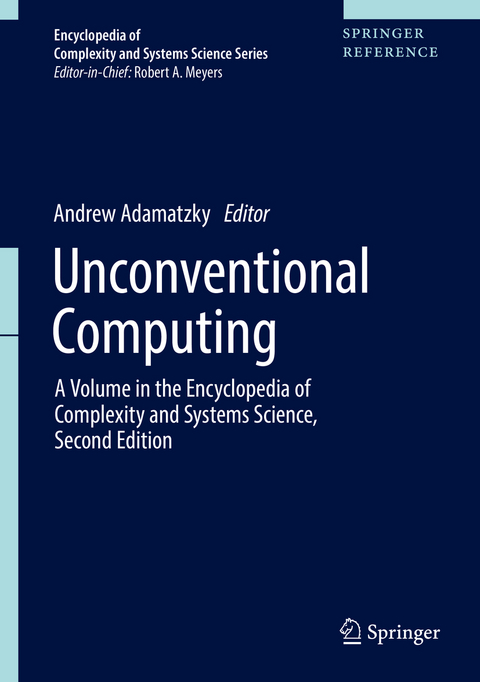
Unconventional Computing
Springer-Verlag New York Inc.
978-1-4939-6882-4 (ISBN)
Unconventional computing is a cross-breed of computer science, physics, mathematics, chemistry, electronic engineering, biology, materials science and nanotechnology. The aims are to uncover and exploit principles and mechanisms of information processing in, and functional properties of, physical, chemical and living systems, with the goal to develop efficient algorithms, design optimal architectures and manufacture working prototypes of future and emergent computing devices.
Andrew Adamatzky is a Professor in the department of Computer Science and Creative Technologies and Director of the Unconventional Computing Centre, University of the West of England. He has published extensively in theory of computation, cellular automata and mathematical machines, parallel computing, living technologies, organic electronics, and bio-inspired computing. He has authored several books, including Identification of Cellular Automata, Computing in Nonlinear Media, Reaction Diffusion Computers, Dynamics of Crowded Minds, Physarum Machines and edited over 25 collections of chapters. He is founding editor-in-chief of the Journal of Cellular Automata and Journal of Unconventional Computing and editor-in-chief of the International Journal of Parallel, Emergent and Distributed Systems, and Parallel Processing Letters.
Amorphous Computing.- Algorithmic Cognition.- Analog Computation.- Applications of P Systems.- Approximations to algorithmic probability.- Artificial Chemistry.- Bacterial Computing.- Biomolecular Data Structures.- Cellular Computing.- Computing with Solitons.- DNA Computing.- Evolution in Materio.- Grossone Infinity Computing.- Immune computing.- Inductive Turing Machines.- Mechanical Computing: The Computational Complexity of Physical Devices.- Membrane Computing, Power and Complexity.- Molecular Automata.- Nanocomputers.- Neuromorphic Computing based on Organic Memristive Systems.- Neuromorphic Photonics, Principles of.- Novel Hardware for Unconventional Computing.- Optical Computing.- Quantum Computing.- Reaction-Diffusion Computing.- Reversible Computing.- Slime Mould Computing.- Thermodynamics of Computation.- Unconventional Computing, Introduction to.- Metaheuristics.- Cuckoo Search.- Firefly Algorithm.- Sound and Music Computing.- Unconventional Computational Problems.- Enzyme-based computing.- Inductive Turing machines and complexity, super-recursive algorithms.- Reservoir computing, principles, and applications.- Collision-based computing.- Grossone Infinity Computing.- Unconventional Computational Problems.
| Erscheinungsdatum | 17.09.2018 |
|---|---|
| Reihe/Serie | Encyclopedia of Complexity and Systems Science Series | Unconventional Computing |
| Zusatzinfo | 112 Illustrations, color; 251 Illustrations, black and white; XXVII, 693 p. 363 illus., 112 illus. in color. |
| Verlagsort | New York |
| Sprache | englisch |
| Maße | 178 x 254 mm |
| Themenwelt | Informatik ► Theorie / Studium ► Künstliche Intelligenz / Robotik |
| Naturwissenschaften ► Biologie | |
| Naturwissenschaften ► Chemie ► Physikalische Chemie | |
| Naturwissenschaften ► Physik / Astronomie ► Thermodynamik | |
| ISBN-10 | 1-4939-6882-3 / 1493968823 |
| ISBN-13 | 978-1-4939-6882-4 / 9781493968824 |
| Zustand | Neuware |
| Haben Sie eine Frage zum Produkt? |
aus dem Bereich


